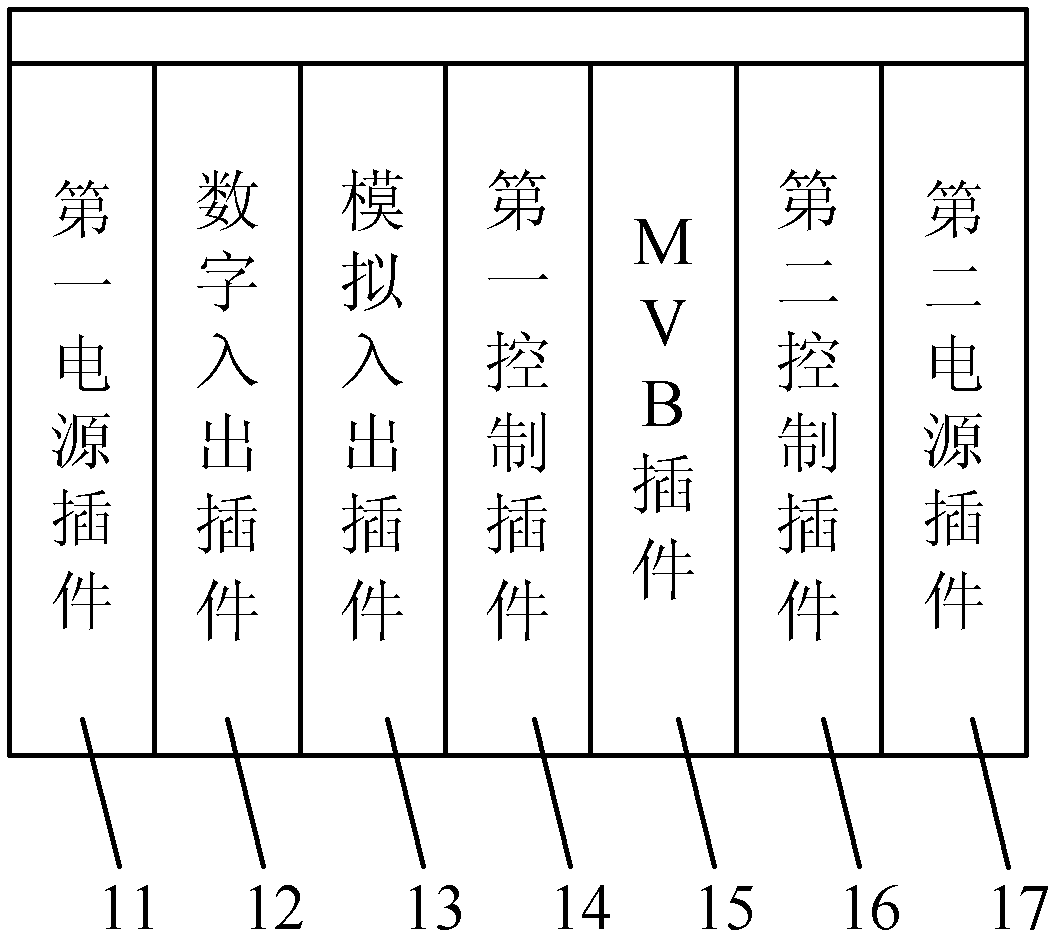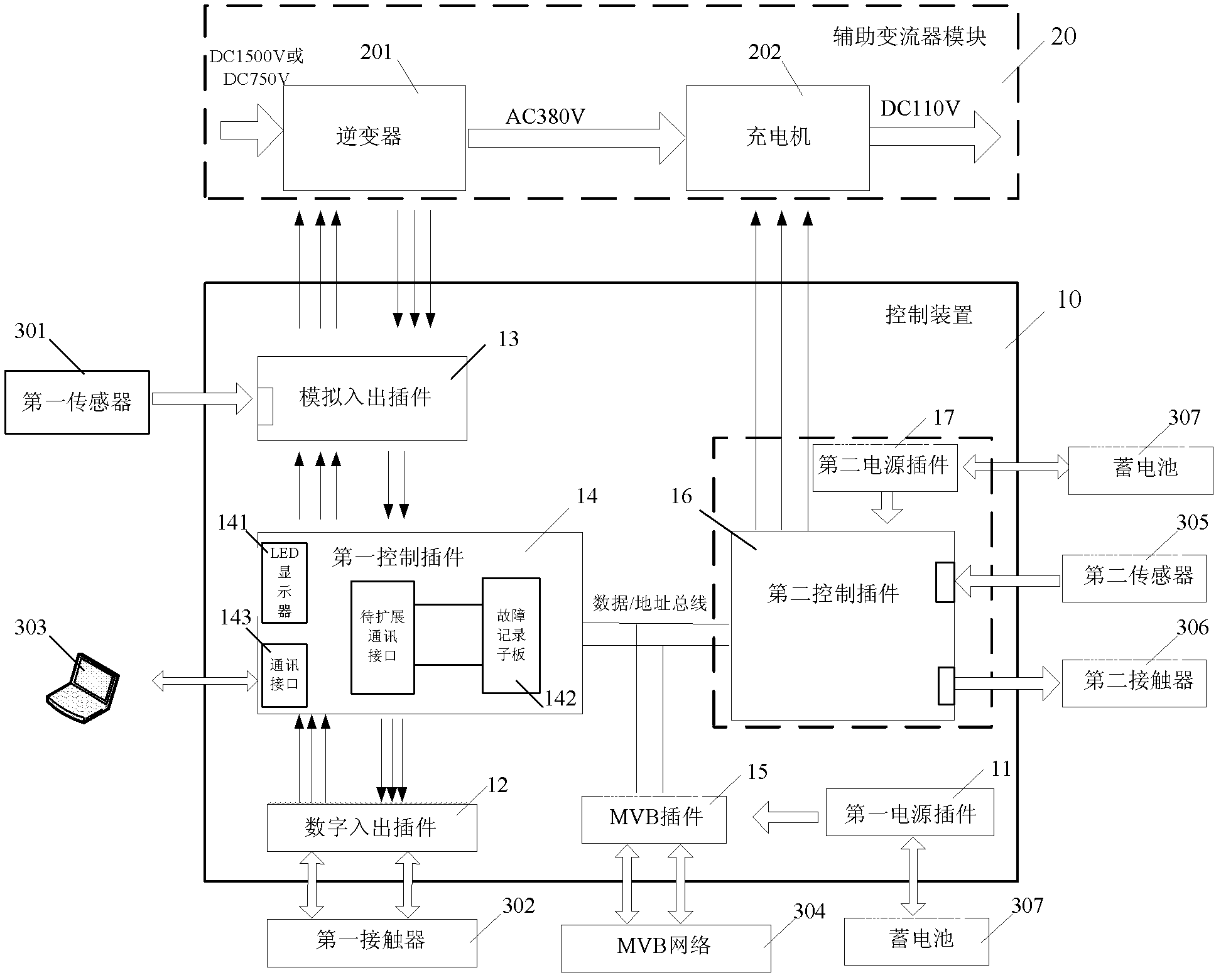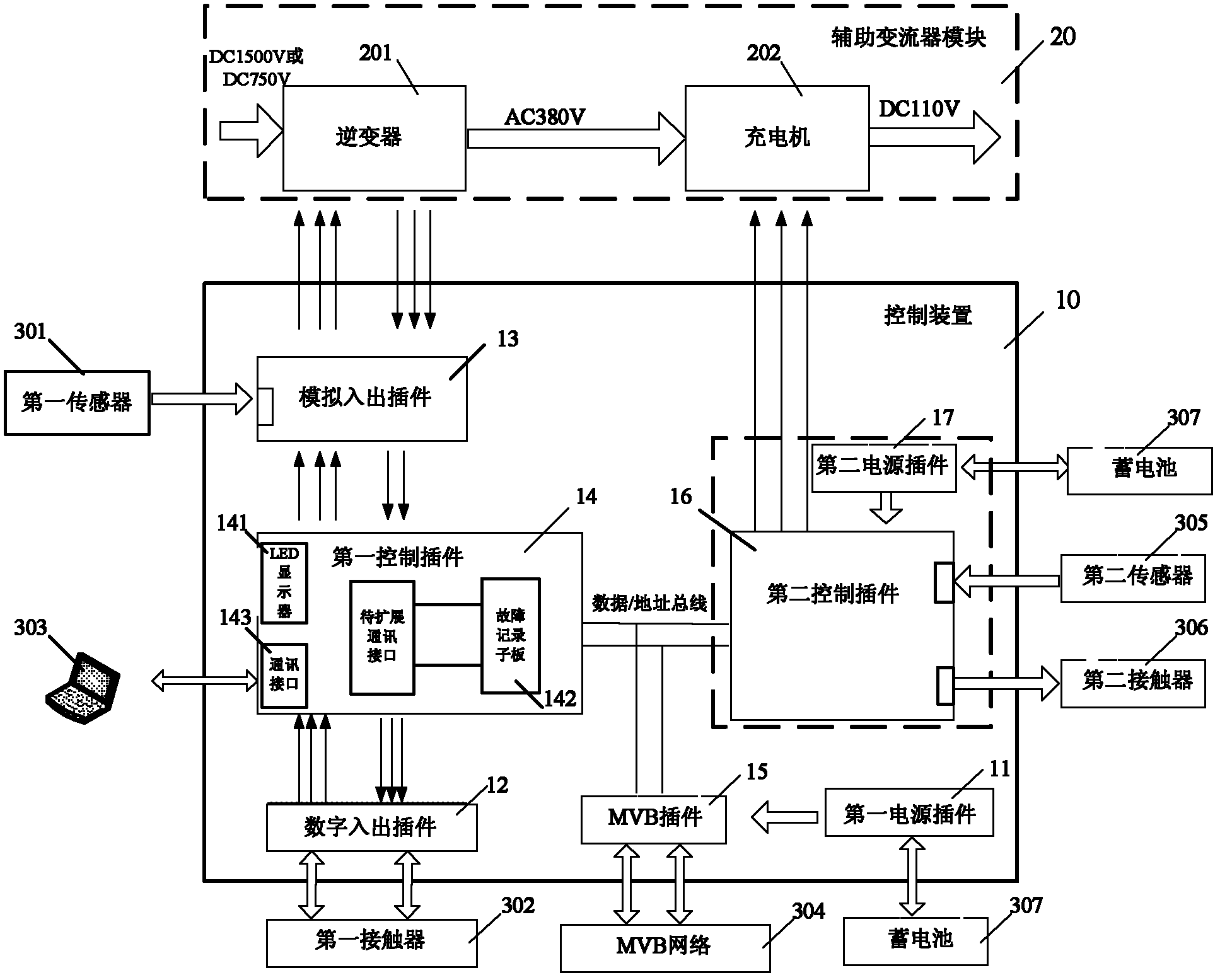Control device for auxiliary current transformer and auxiliary current transformer system
A technology for auxiliary converters and control devices, which is applied in the field of converters, can solve the problems of reducing the development efficiency of auxiliary converters, unfavorable product unified maintenance, and hardware redesign, so as to facilitate unified maintenance, improve development efficiency, and reduce The effect of R&D costs
- Summary
- Abstract
- Description
- Claims
- Application Information
AI Technical Summary
Problems solved by technology
Method used
Image
Examples
Embodiment Construction
[0031] In order to make the above objects, features and advantages of the present invention more comprehensible, the present invention will be further described in detail below in conjunction with the accompanying drawings and specific embodiments.
[0032] In view of this, the purpose of the present invention is to provide a control device for auxiliary converters and an auxiliary converter system, which have perfect functions and unified interfaces, can improve the development efficiency of auxiliary converters, reduce research and development costs, and facilitate product development. Unified maintenance.
[0033] The control device for the auxiliary converter in the embodiment of the present invention is used to control the auxiliary converter module. The auxiliary converter module includes: an inverter and a charger.
[0034] The control device adopts a plug-in box structure, and the front panel outlet mode includes: a first power plug-in, a digital input and output plug...
PUM
 Login to View More
Login to View More Abstract
Description
Claims
Application Information
 Login to View More
Login to View More - R&D
- Intellectual Property
- Life Sciences
- Materials
- Tech Scout
- Unparalleled Data Quality
- Higher Quality Content
- 60% Fewer Hallucinations
Browse by: Latest US Patents, China's latest patents, Technical Efficacy Thesaurus, Application Domain, Technology Topic, Popular Technical Reports.
© 2025 PatSnap. All rights reserved.Legal|Privacy policy|Modern Slavery Act Transparency Statement|Sitemap|About US| Contact US: help@patsnap.com



